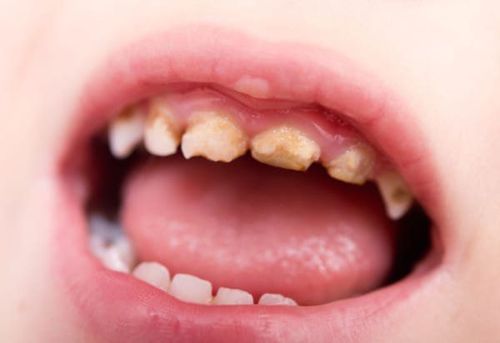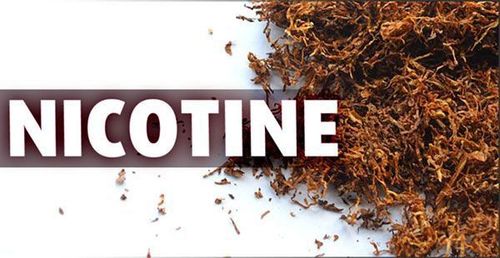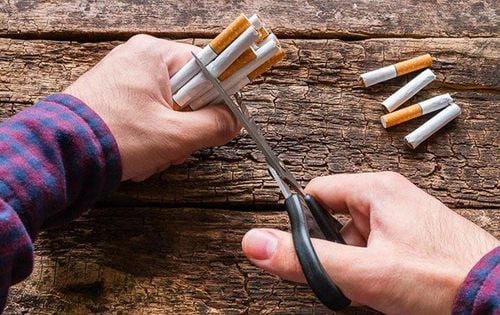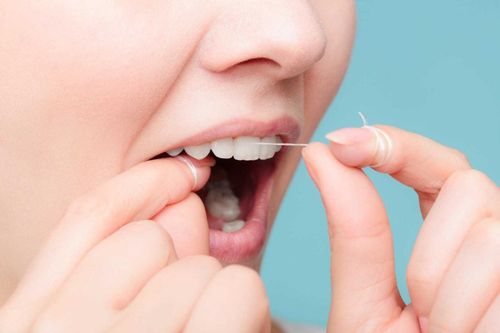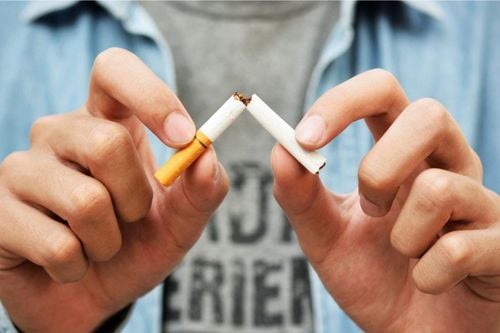This is an automatically translated article.
Smoking is harmful to the oral health of the smoker himself. However, secondhand smoke can also cause dental problems for others when inhaled.
1. How does passive smoking cause tooth decay in children?
In all children, baby tooth decay is extremely common. Usually, parents focus on limiting sugar intake, practicing proper oral hygiene habits for children as a key method to prevent tooth decay. However, new studies have shown that secondhand smoke may also play a role in the development of tooth decay in children, even long after exposure to secondhand smoke.
So how does secondhand smoke contribute to children's tooth decay? According to the analysis, smoking can cause stomatitis, damage to salivary gland function and decrease serum vitamin C levels as well as immune dysfunction. All of these contribute to the development of tooth decay in children.
The harmful effects of passive smoking in children were also observed with lower salivary IgA concentrations, higher sialic acid concentrations and higher activity. Sialic acid is one of the factors that promotes the formation of dental plaque and ultimately causes tooth decay. Furthermore, the teeth of children exposed to passive smoking showed that morphological function and dental hard tissue mineralization were also inhibited. As such, this suggests that minimizing secondhand smoke could help prevent tooth decay in children.
Even with other studies, the aim is to look at the effects of secondhand smoke during pregnancy on the baby's teeth after birth. The results showed that the group of children born to mothers who smoked during pregnancy as well as the group of children exposed to secondhand smoke from birth until 4 months of age had a higher risk of tooth decay. many times. This is explained by the chemicals in cigarette smoke that adversely affect the baby's baby teeth from the time they are fetuses.
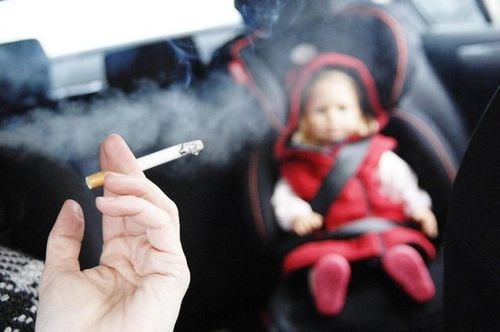
Khói thuốc thụ động cũng có thể là yếu tố gây phát triển sâu răng ở trẻ em
2. Other factors that can cause tooth decay in children Helping children have strong and beautiful baby teeth from the start will greatly contribute to oral health as adults. In addition to secondhand smoke, knowing other factors that contribute to tooth decay in children will reduce dental care costs and help them achieve a beautiful smile for a lifetime.
Here are the factors that can cause tooth decay in children:
Foods children consume Many parents think that lozenges are the culprit for children's tooth decay, but that's not always the case. Pay attention to what your child eats and drinks on a regular basis, as well as how often they snack.
The habit of eating or drinking regularly throughout the day will increase the time of exposure to acidic plaque on the teeth, making children more susceptible to tooth decay than children who only eat meals at certain times of the day. day.
Besides, liquids are also especially harmful to teeth because they coat the entire tooth and deposit acidic bacteria in the cavities or grooves of the teeth. As such, when children regularly consume sports drinks, juices, milk or soft drinks throughout the day can significantly increase the risk of tooth decay developing over time.
In addition, parents should encourage children to drink fluoridated water between meals. Water not only cleans teeth naturally, but it also reduces acidity and encourages proper tooth growth.
Diseases that can cause tooth decay Some medical conditions or the use of drugs can also increase the likelihood of tooth decay in children.
For example, when a child has chronic allergies, nasopharyngeal obstruction, and the child needs frequent mouth breathing, this behavior will cause a decrease in salivary flow, which is directly related to an increase in dental caries. children . At the same time, anti-allergic drugs, antihistamines also have a mechanism of causing dry mouth, reducing saliva production and increasing the risk of tooth decay.
On the other hand, when children take certain medicines, such as inhalers used for asthma, they can also develop tooth decay due to drug exposure.
3. Preventing tooth decay in children To prevent tooth decay in children, parents need to take the following methods:
Do not expose children to secondhand smoke Because of smoking around young children Since smoking increases the risk of developing tooth decay, a smoking cessation program is the best way for the whole family to enjoy overall health. This can be an incentive for parents to give up smoking more successfully. Besides, in addition to minimizing exposure to secondhand smoke, it is also important for parents to instill good oral care habits in their children during infancy and toddlerhood.
Assist in practicing oral care habits for children By the time they can tie their own shoelaces, they have had the necessary level of dexterity to brush their teeth properly to completely remove the plaque on the teeth. teeth effectively.
Thus, parents both set an example, encourage and support children while brushing and flossing twice a day. Gradually, children will become better at cleaning their own teeth and parents will be able to reduce the level of intervention.
Gargle with fluoridated water Even when children have good oral hygiene, the enamel of milk teeth is inherently weaker than that of permanent teeth, so the possibility of tooth decay in children has not been completely ruled out. Therefore, adding a fluoride-containing mouthwash to your daily oral hygiene routine can help strengthen tooth enamel, making it more resistant to tooth decay.

Giảm thiểu khói thuốc thụ động có thể giúp ngăn ngừa sâu răng ở trẻ em.
In liquid form, fluoride water can target areas not easily accessible by brushing. In fact, this chemical may even help remineralize areas that are starting to form the early stages of tooth decay. However, fluoridated water should only be used by children 6 years of age and older.
Regular visits to the dentist Train children to visit the dentist regularly from a very young age so that children can cooperate more in the future, reduce fear and fussiness.
Pediatricians and dentists recommend that all children have their first dental visit when they turn 1 year old and then every 6 months after that. Early care and prevention can identify problems like tooth decay in children in their earliest stages, preventing the disease from progressing.
In summary, the link between passive smoking and dental caries in children has been proven by many studies. This result will both motivate parents to quit smoking and increase their understanding of creating a healthy environment for young children. In addition, parents also need to teach children the right oral care habits from an early age so that the child has a healthy baby teeth, creating a solid foundation and beauty for the future permanent teeth.
Please dial HOTLINE for more information or register for an appointment HERE. Download MyVinmec app to make appointments faster and to manage your bookings easily.
References: webmd.com, ncbi.nlm.nih.gov, imt.ie



